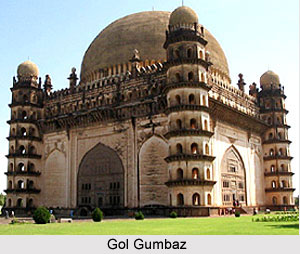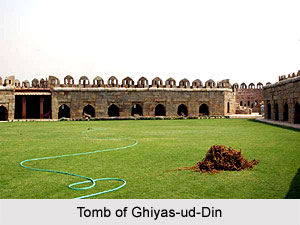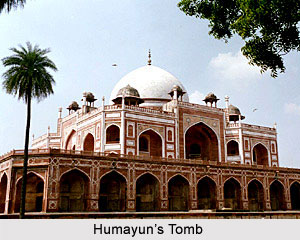 Muslims invaded Indian subcontinent in the 8th century for the first time. Its major portions came under the influence of the Caliphs of Baghdad or the Arab invaders. However, India experienced the Islamic architecture much later in the first half of the 12th century with the establishment of the Slave Dynasty. Islamic architecture was highly diverse by culture, climate and can be typically marked for its love of geometrical pattern, arabesque ornamentation and innovative patterns.
Muslims invaded Indian subcontinent in the 8th century for the first time. Its major portions came under the influence of the Caliphs of Baghdad or the Arab invaders. However, India experienced the Islamic architecture much later in the first half of the 12th century with the establishment of the Slave Dynasty. Islamic architecture was highly diverse by culture, climate and can be typically marked for its love of geometrical pattern, arabesque ornamentation and innovative patterns.
The developments of the Islamic architecture took place in two different categories, Imperial Style and the Mughal Architecture. The development of the Imperial style of architectural happened under the Sultans of Delhi whereas the Mughal architectural development took place under the guidance of Mughal rulers in the latter half. These architectures were derived from the existing art of Central Asia and developed in India under different Muslim dynasties. The imperial style of Islamic architecture may be divided into five phases corresponding to the five Muslim dynasties which prevailed in Indian subcontinent region from the twelfth to the sixteenth centuries. They are the Slave Dynasty, Khalji Dynasty, Tughlaq Dynasty, Sayyid Dynasty, and the Lodi Dynasty. All the rulers from every dynasty had passion for building art. The style of Islamic architecture developed in the Slave dynasty was maintained for a period of over three and a half centuries that was introduced in last years of the twelfth century. Qutb-ud-din established the Slave dynasty 1206 in Delhi where he maintained the ancient tradition of building arts of Arabs. Their productions played a major role in the significance in laying the foundations of the style. At first they marked the place for mosques, with a central place of assembly for the people. Then, under his guidance the local workmen constructed the mosque. In such circumstances the first Islamic building in India of decent stone was the wonderful creation, a patch work of older materials, beautiful in detail, as its arcaded aisles were composed of pillars carved in Hindu style. As a whole the architecture became the amalgamation of Hindu culture to that of the Islamic tradition. In view of the unusual object of these early examples of Indo-Islamic architecture, and the input each makes to the development of the style, every building constructed during the dominance of the Slave Kings possesses interest and value. The Slave dynasty was the most active patron of the Islamic architecture and their creations were of the greatest significance in laying the foundations of the style in India. After the end of the Slave dynasty, this tradition was followed and developed by the Khalji dynasty.
 Architecture during Khalji dynasty was in the influential stage and made a little progress in the thirteenth century in India. They were the second Muslim dynasty, ruled the Delhi Sultanate from 1290 to 1320. Under the reign of Ala-ud-din Khalji, a major improvement of Islamic architecture took place. He was considered as a great patron of Indo-Islamic architecture in the Indian subcontinent. The architecture of Khalji dynasty came to an end after the demise of its last Sultan Mubarik.
Architecture during Khalji dynasty was in the influential stage and made a little progress in the thirteenth century in India. They were the second Muslim dynasty, ruled the Delhi Sultanate from 1290 to 1320. Under the reign of Ala-ud-din Khalji, a major improvement of Islamic architecture took place. He was considered as a great patron of Indo-Islamic architecture in the Indian subcontinent. The architecture of Khalji dynasty came to an end after the demise of its last Sultan Mubarik.
After the Khalji dynasty, it was the Tughlaq dynasty who ruled over the Delhi Sultanate and was fond of building arts. The architecture of Tughlaq dynasty developed in Indian subcontinent when Ghazi Tughlaq became the ruler of Delhi defeating the Khaljis. They belonged from the Turkish origin and were in power at Delhi for almost hundred years. The major contributions to the Islamic architecture were Ghiyas-ud-din Tughlaq, the founder of the dynasty, his son, Mohammed Shah Tughlaq, and the most creative emperor Firoz Shah Tughlaq. Feroz Shah Tughlaq was considered as a great admirer of Islamic architecture. He created Ferozshah Kotla, the fifth city of Delhi. In Tughlaq dynasty many artisans were hired to construct several building arts in Indo-Islamic architectural style. This fusion style of architecture in India gradually developed into a great architectural significance during the Tughlaq dynasty in India. Each ruler of this dynasty contributed several architectural creativities to the capital city.
 Apart from these Imperial systems of architecture, another style of Islamic architecture also developed its foothold to different areas of Indian subcontinent. Named as the provincial style of Indo-Islamic architecture, this specific style introduced itself in different provinces during the Islamic rules and made tremendous growth. This architecture contained the specific features of a province with the fusion of Islamic culture. They introduced many new features to their building arts. During the provincial period, many mosques, tombs forts and palaces were constructed. The architectures of a province grew strong when it remained close to the central power. The nature of indigenous arts also helped to expand the provincial style in India. Local craftsmen mixed their style to the Islamic architecture which resulted to develop this special architecture. Migration of Persian craftsmen to India also played a major role in the development of this provincial style. They amalgamated their architecture with local style and created amazing Islamic architectures. In few parts of the country, climatic conditions were also responsible for the provincial style as one kind of building material being common in some regions and rare in others, all of which naturally affected the character of the building art. The provincial style of architecture developed from Punjab province and gradually expanded to the other parts of India. They were divided into the separate style of architectures of Punjab, Bengal, Gujarat, Malwa, Bijapur and Kashmir respectively that produced wonderful architectures in India during the Muslim
Apart from these Imperial systems of architecture, another style of Islamic architecture also developed its foothold to different areas of Indian subcontinent. Named as the provincial style of Indo-Islamic architecture, this specific style introduced itself in different provinces during the Islamic rules and made tremendous growth. This architecture contained the specific features of a province with the fusion of Islamic culture. They introduced many new features to their building arts. During the provincial period, many mosques, tombs forts and palaces were constructed. The architectures of a province grew strong when it remained close to the central power. The nature of indigenous arts also helped to expand the provincial style in India. Local craftsmen mixed their style to the Islamic architecture which resulted to develop this special architecture. Migration of Persian craftsmen to India also played a major role in the development of this provincial style. They amalgamated their architecture with local style and created amazing Islamic architectures. In few parts of the country, climatic conditions were also responsible for the provincial style as one kind of building material being common in some regions and rare in others, all of which naturally affected the character of the building art. The provincial style of architecture developed from Punjab province and gradually expanded to the other parts of India. They were divided into the separate style of architectures of Punjab, Bengal, Gujarat, Malwa, Bijapur and Kashmir respectively that produced wonderful architectures in India during the Muslim
The last development of Islamic architecture was the Mughal architecture that took place in the Mughal era under several Mughal emperors. This era is considered as the historic period of the Mughal dynasty that ruled Delhi and the other parts of India from 1526 to 1858. It was the longest lasting Muslim dynasty that created amazing arts and architectures. They created a vast empire in India with creative hub of Islamic culture to the cities like Delhi, Agra, Lahore (now in Pakistan) and Fatehpur Sikri. They were aware of the influence of Islamic architecture and used them as their status symbol. regime. Taj Mahal at Agra, Humayun`s tomb at Delhi, Tomb of Khan-i Khanan in south Nizamuddin, Red Fort at Agra, Mausoleum of Akbar at Sikandara city outside Agra, Tomb of Itimad al-Dawleh at Agra, and the Nawab Safdar Jang`s tomb at Delhi still stands as the logo of the marvelous Mughal architecture.
The Islamic architectures were wonderful and expressive and evolved into memorable architectural styles in India, affected by local influences. The Islamic architectures of medieval period are still considered as the heritage of India.



















